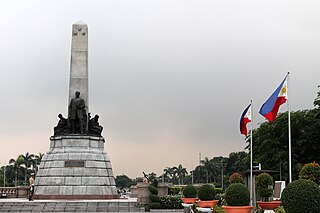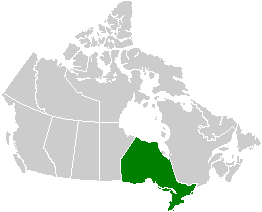The International Council on Monuments and Sites is a professional association that works for the conservation and protection of cultural heritage places around the world. Now headquartered in Charenton-le-Pont, ICOMOS was founded in 1965 in Warsaw as a result of the Venice Charter of 1964, and offers advice to UNESCO on World Heritage Sites.

Rescue archaeology, sometimes called commercial archaeology, preventive archaeology, salvage archaeology, contract archaeology, or compliance archaeology, is state-sanctioned, for-profit archaeological survey and excavation carried out in advance of construction or other land development. These conditions could include, but are not limited to, highway projects, major construction, the flood plain of a proposed dam, or even before the onset of war. Unlike traditional survey and excavation, rescue archaeology must be undertaken at speed. Rescue archaeology is included in the broader categories that are cultural resource management (CRM) and cultural heritage management (CHM).

The National Historic Preservation Act is legislation intended to preserve historic and archaeological sites in the United States of America. The act created the National Register of Historic Places, the list of National Historic Landmarks, and the State Historic Preservation Offices.

Cultural heritage tourism is a branch of tourism oriented towards the cultural heritage of the location where tourism is occurring.

Cultural heritage is the legacy of physical artifacts and intangible attributes of a group or society that is inherited from past generations. Not all legacies of past generations are "heritage", rather heritage is a product of selection by society.

Cultural heritage management (CHM) is the vocation and practice of managing cultural heritage. It is a branch of cultural resources management (CRM), although it also draws on the practices of cultural conservation, restoration, museology, archaeology, history and architecture. While the term cultural heritage is generally used in Europe, in the USA the term cultural resources is in more general use specifically referring to cultural heritage resources.

The Intangible Cultural Properties are aspects of intangible culture that the government of South Korea has officially designated for preservation in accordance with the 1962 Cultural Property Protection Law. They are proclaimed and maintained by South Korea's Cultural Heritage Administration.
David G. Anderson is an archaeologist in the department of anthropology at the University of Tennessee, Knoxville, who specializes in Southeastern archaeology. His professional interests include climate change and human response, exploring the development of cultural complexity in Eastern North America, maintaining and improving the nation's Cultural Resource management (CRM) program, teaching and writing about archaeology, and developing technical and popular syntheses of archaeological research. He is the project director of the on-line Paleoindian Database of the Americas (PIDBA). and a Co-Director, with Joshua J. Wells, Eric C, Kansa, and Sarah Whitcher Kansa, of the Digital Index of North American Archaeology (DINAA)
Judith Ann Bense is an American academic, Florida historical archaeologist, and a former president of the University of West Florida. She is also the chairwoman of the Florida Historical Commission At the University of West Florida, she served as a faculty member and department chair in the anthropology program, which she started at the school. In 2008, she started her 7-year term as president of the university. Prior to this promotion, she was the former executive director of anthropology and archaeology at UWF. During her career, she was fundamental in drafting the legislation to create the Florida Public Archaeology Network (FPAN)[1].
Archaeology, or archeology, is the study of human activity through the recovery and analysis of material culture. The archaeological record consists of artifacts, architecture, biofacts or ecofacts and cultural landscapes. Archaeology can be considered both a social science and a branch of the humanities. In Europe it is often viewed as either a discipline in its own right or a sub-field of other disciplines, while in North America archaeology is a sub-field of anthropology.

Indigenous archaeology is a sub-discipline of western archaeological theory that seeks to engage and empower indigenous people in the preservation of their heritage and to correct perceived inequalities in modern archaeology. It also attempts to incorporate non-material elements of cultures, like oral traditions, into the wider historical narrative. This methodology came out of the global anti-colonial movements of the 1970s and 1980s led by aboriginal and indigenous people in settler-colonial nations, like the United States, Canada, and Australia. Major issues the sub-discipline attempts to address include the repatriation of indigenous remains to their respective peoples, the perceived biases that western archaeology's imperialistic roots have imparted into its modern practices, and the stewardship and preservation of indigenous people's cultures and heritage sites. This has encouraged the development of more collaborative relationships between archaeologists and indigenous people and has increased the involvement of indigenous people in archaeology and its related policies.

The Philippine Registry of Cultural Property, abbreviated as PRECUP is a national registry of the Philippine Government used to consolidate in one record all cultural property that are deemed important to the cultural heritage, tangible and intangible, of the Philippines. In June 11, 2018, the entries in the newly-updated PRECUP was at 3,921. Additionally, 1,259 out of 1,715 LGUs, or 73 percent of LGUs have established local cultural inventories (LCI).

Archaeology and conservation of cultural resources in Ontario fall under the Ministry of Tourism, Culture and Sport. The Province of Ontario has created Acts to insure the protection archaeological and cultural resources. Acts such as the Ontario Heritage Act and Environmental Assessment Act provide the major legal documents that protect heritage and cultural resources. Additionally, Acts such as the Planning Act, the Aggregate Resource Act and the Ontario Cemeteries Act are also implemented when specific triggers occur during archaeological assessments.

Archaeology in Saskatchewan, Canada, is supported by professional and amateur interest, privately funded and not-for-profit organizations, and governmental and citizen co-operation with the primary incentive to encourage archaeological awareness and interest in the heritage that defines the province to this date. The landscape of Saskatchewan hosts substantial prehistoric and historic sites.

Hester A. Davis (1930-2014) was an American archaeologist. Arkansas' first State Archaeologist, she was instrumental in creating national public policy and conservancy standards for cultural preservation as well as developing professional and ethical standards for archaeologists. She was the recipient of numerous awards and honors, including two distinguished service awards and induction into the Arkansas Women's Hall of Fame.
Laurajane Smith is a Heritage and Museum Studies scholar, although originally trained as an Australian archaeologist. Smith's work examines how Heritage is mobilised within communities and informs individual and collective identities. Smith has explored the intersections between Gender and Heritage through Feminist critique in multiple publications.
Heritage management in the Philippines is guided by laws and agencies that create regulations for potentially destructive behaviors such as excavations and demolition. Legislation pertaining to heritage management consists of Republic Acts and Presidential Decrees. Organizations such as UNESCO, the National Commission for Culture and the Arts, and the Heritage Conservation Society are also referred to in laws.
Janet Friedman (1945-2002) was an American archaeologist who made major contributions to cultural resource management. She was also an early contributor to the development of wet site archaeology. As head archaeologist for the United States Forest Service (USFS) and later as Federal Preservation Officer for the Department of Agriculture (USDA) and member of the Advisory Council on Historic Preservation (ACHP), Friedman was actively involved in developing the Archaeological Resources Protection Act of 1979 (ARPA) from its naissance. She was a member of the Society for American Archaeology (SAA), the Women’s Council on Energy and the Environment, and the Mid-Atlantic Archaeological Conference and, as one of the first female students in Washington State University’s (WSU) Anthropology doctoral program, she actively mentored women in cultural and environmental sciences throughout her career, promoting gender equality in the field.

Leslie E. Wildesen (1944-2014) was an American archaeologist best known for her work in policy-making. As the first woman archaeologist in the United States Forest Service and the first regional archaeologist in the Pacific Northwest, she wrote the first guidebook used by a government agency for the management of cultural resources. Throughout her career, she made great strides in public involvement in archaeology, collaboration with Native American tribes, protection of Native American burials, and environmental policy implementation. She developed numerous training programs regarding the National Environmental Protection Act (NEPA) and environmental law.











